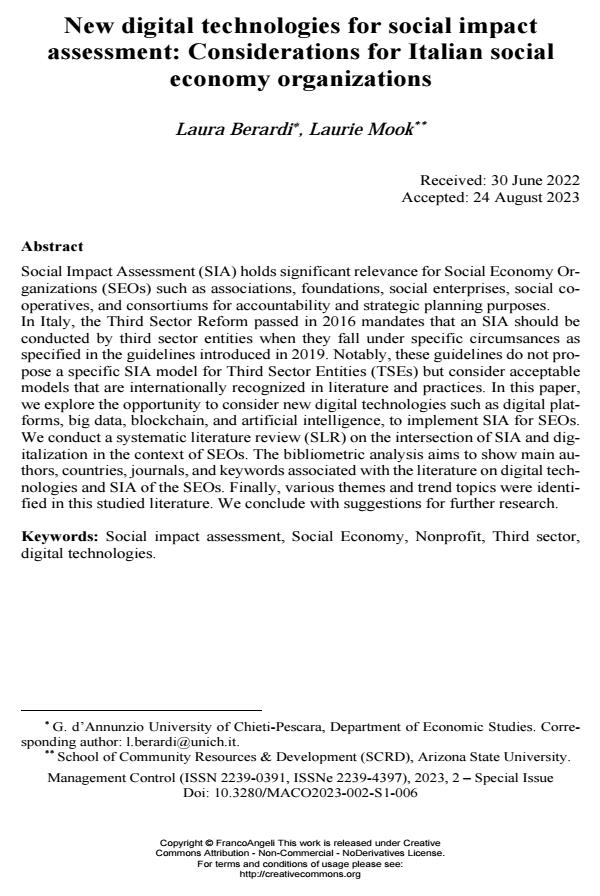New digital technologies for social impact assessment: Considerations for Italian social economy organizations
Journal title MANAGEMENT CONTROL
Author/s Laura Berardi, Laurie Mook
Publishing Year 2023 Issue 2023/2 Suppl.
Language English Pages 24 P. 109-132 File size 431 KB
DOI 10.3280/MACO2023-002-S1006
DOI is like a bar code for intellectual property: to have more infomation
click here

FrancoAngeli is member of Publishers International Linking Association, Inc (PILA), a not-for-profit association which run the CrossRef service enabling links to and from online scholarly content.
Social Impact Assessment (SIA) holds significant relevance for Social Economy Organizations (SEOs) such as associations, foundations, social enterprises, social cooperatives, and consortiums for accountability and strategic planning purposes. In Italy, the Third Sector Reform passed in 2016 mandates that an SIA should be conducted by third sector entities when they fall under specific circumsances as specified in the guidelines introduced in 2019. Notably, these guidelines do not propose a specific SIA model for Third Sector Entities (TSEs) but consider ac-ceptable models that are internationally recognized in literature and practices. In this paper, we explore the opportunity to consider new digital technologies such as digital platforms, big data, blockchain, and artificial intelligence, to implement SIA for SEOs. We conduct a systematic literature review (SLR) on the intersection of SIA and digitalization in the context of SEOs. The bibliometric analysis aims to show main authors, countries, journals, and keywords associated with the litera-ture on digital technologies and SIA of the SEOs. Finally, various themes and trend topics were identified in this studied literature. We conclude with suggestions for further research.
Keywords: Social impact assessment, Social Economy, Nonprofit, Third sector, digital technologies.
Laura Berardi, Laurie Mook, New digital technologies for social impact assessment: Considerations for Italian social economy organizations in "MANAGEMENT CONTROL" 2 Suppl./2023, pp 109-132, DOI: 10.3280/MACO2023-002-S1006